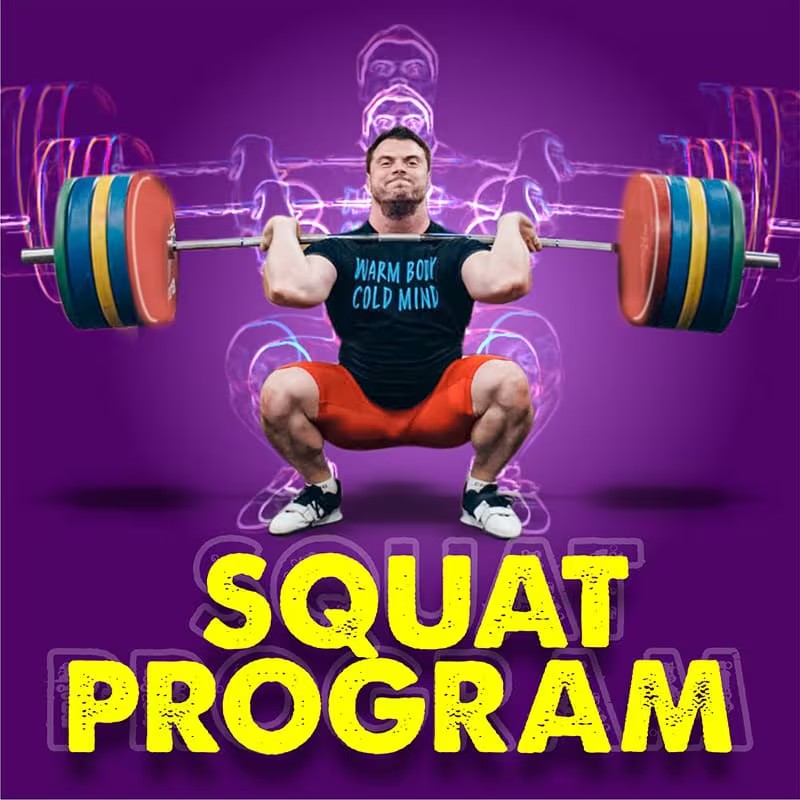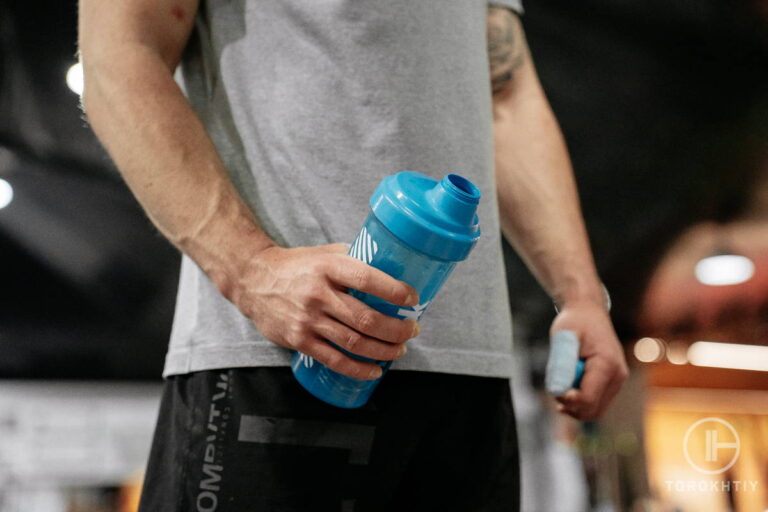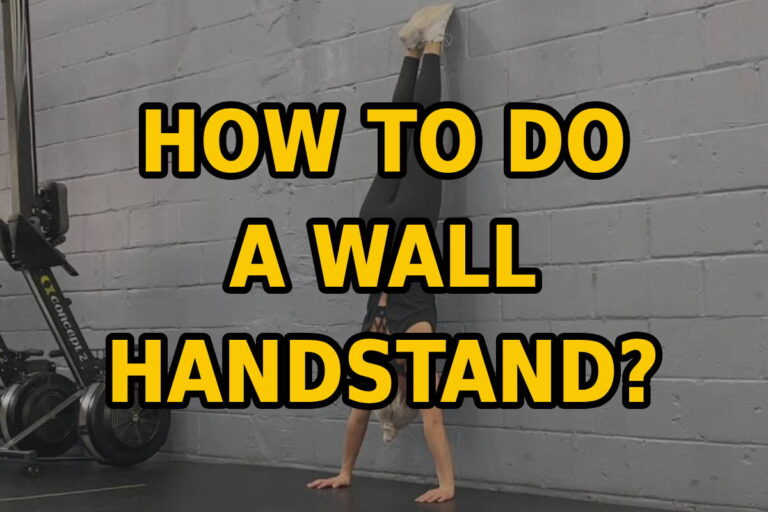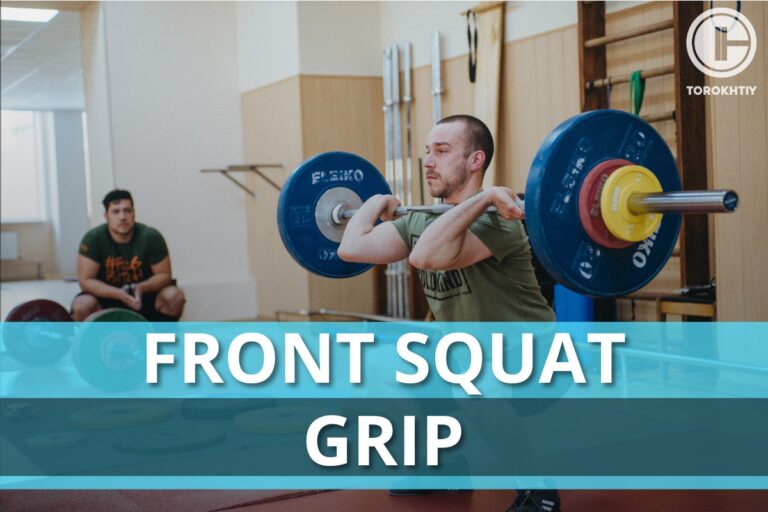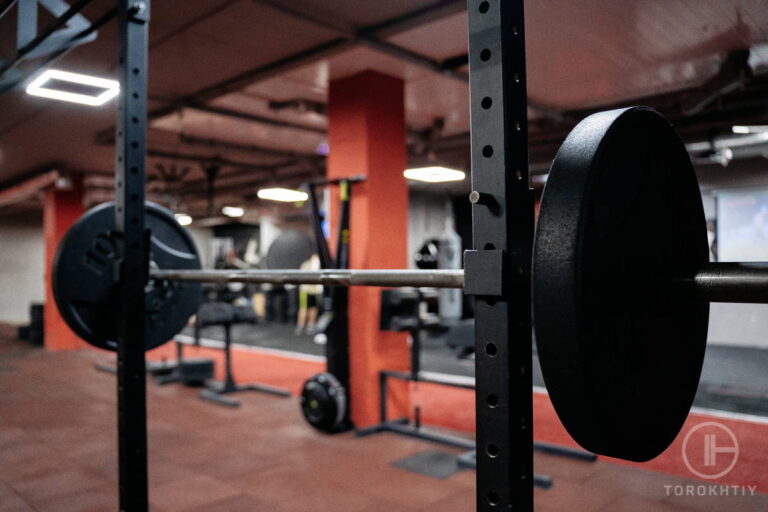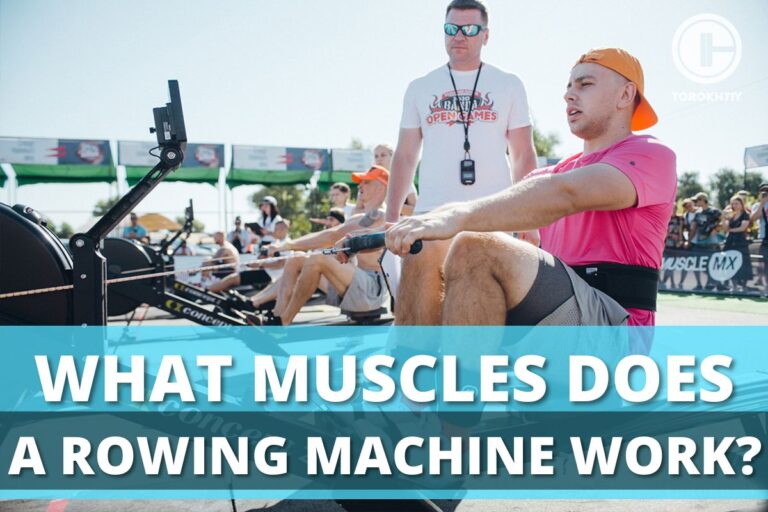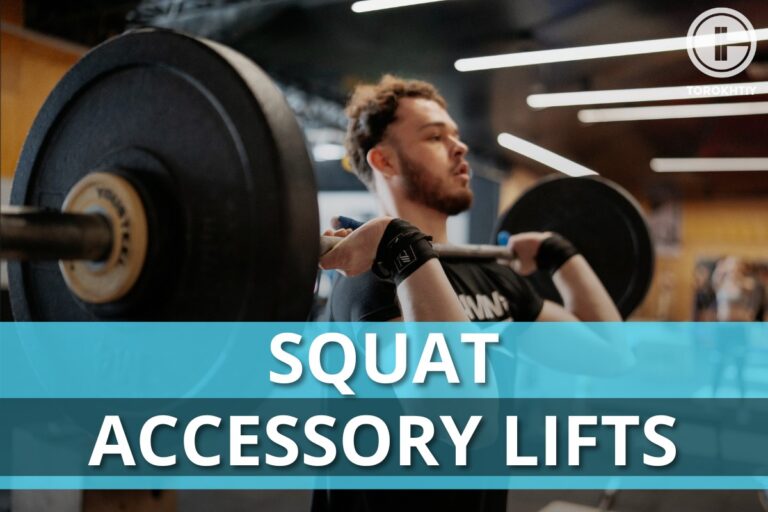9 Harder Squat Variations To Try At Least Once
As the debate over the hardest squat variation continues, people are turning to new ways to squat both from a technical and equipment standpoint to achieve their fitness goals.
If you’ve mastered the traditional barbell back and front squat are looking for a new challenge, these are the harder squat variations you should try. From demanding unilateral exercises to advanced weighted squats, these variations will open up new workout possibilities the next time you feel like squatting.
Harder Squat Variations: Squats offer versatile training options for various muscles and goals. Stance width and weight position can change difficulty levels. There is no official hardest squat variation, but some worth trying include the AGT, overhead squat, and Bulgarian split squat.
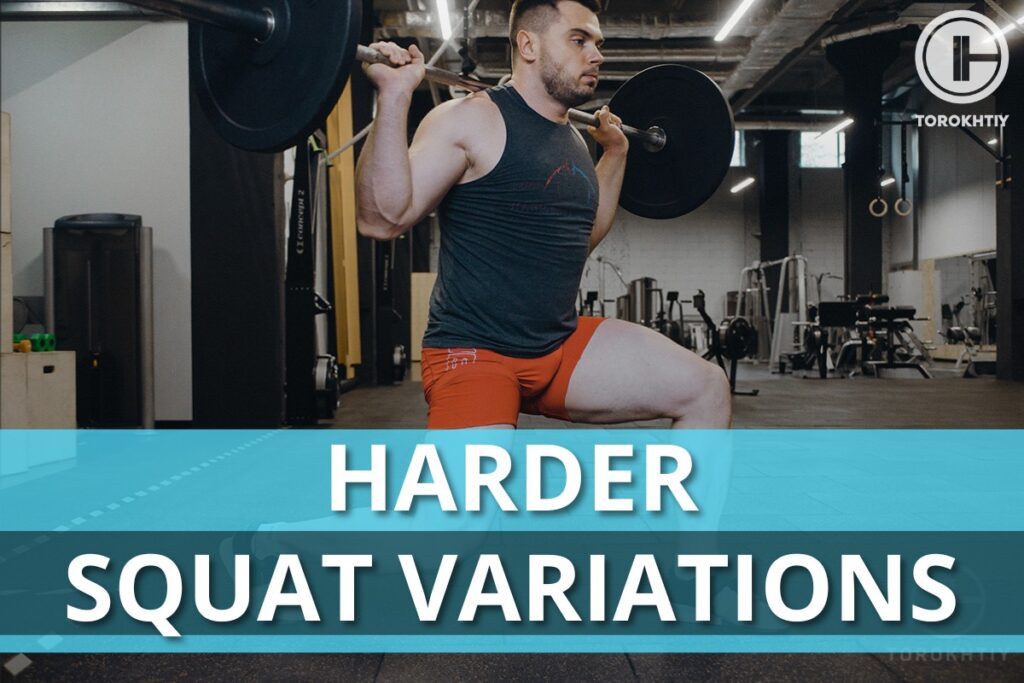
What Makes A Squat Harder?
Squats are one of the most popular and highly recommended lower-body exercises. Even though they fall in the weightlifting category, their widespread application extends beyond raw strength training.
The primary muscles targeted by squats are the Quadriceps or Quads for short, glutes, hamstrings, core and more, which are responsible for all kinds of daily movements, from walking and running, to jumping, climbing stairs, and more.
As such, squat variations are employed in fitness programs, rehabilitation programs, athlete conditioning, and more.
However, although the basic squat motion of moving up and down through our hips is a daily occurrence (think of sitting down, for example), beginners especially can find it difficult to perform squats and stray away from them.
With that in mind, here are some factors that may influence your ability to perform the squat which you should be aware of.
1. Fitness Level
Experience obviously comes into play when picking up any new exercise. On top of that, your current fitness level plays a role, too. Squats are a compound exercise, meaning they recruit a wide range of muscles and require precise motion to perform.
A traditional back or front squat can be difficult to pick up for people without prior training experience.
Some mechanics that will come into play include your mobility, flexibility, balance, core strength, and general health. That being said, because of its relevance to daily life, it’s fundamental to get that movement right – not necessarily with load, but as a movement itself.
The ability to lower yourself down efficiently and without pain should be a goal regardless of age.
2. Range Of Motion
The range of motion or ROM of an exercise refers to the extent of the movement our muscles perform from the start to the end position. Squats can vary in ROM based on our exercise preferences.
For example, parallel squats stop when our thighs are parallel to the ground, which is about half the ROM of a regular squat. Meanwhile, full squats go beyond the normal ROM for a squat exercise, making them one of the harder squat variations.
🔻12 Week Squat Program by Oleksiy Torokhtiy
Do you want to double your squat strength? In just 12 weeks, you’ll be able to boost your squat results.
This program transforms any ordinary squat into a powerful athletic movement.
What’s included:
- 12 weeks of squat programming;
- Effective combination of sets, reps, and weights;
- Fully designed and coached by Oleksiy Torokhtiy;
- Over 60+ movements, banded work, and weight training;
- Accessory work for core, joint stability and injury prevention;
- Max out on back squat and front squat at the end.
Start now and boost your squat results!
Naturally, the higher the range of motion (ROM), the more difficult an exercise becomes to perform. This increased difficulty arises not only from the fact that muscles are flexed further but also because you are under tension for a longer duration (increased time under tension).
As a result, higher ROM can be more effective than partial ROM for maximizing muscle strength, hypertrophy (muscle growth), and lower-body functionality.
3. Bilateral Differences
It’s widely accepted that everybody has a stronger side of the body, also known as Lateral Dominance. Reasons why are subjected to debate, but arguments stem from neurological composition to simple habit. The difference in ability from your left to the right side is known as the Bilateral difference.
Tips From the Champ
Training bilateral squat variations like the Split or Bulgarian Split Squat can help you overcome bilateral differences.
Olympic Weightlifting Champion
This is especially common if you have pronounced bilateral differences due to lifestyle or occupational differences. Think of how a baseball pitcher will have a more developed throwing arm unless they explicitly train against this. In addition, current or previous injuries or health issues may affect your ability to perform with both sides.
Despite being a fairly well-balanced exercise, bilateral differences can still affect your ability to perform squats.
9 Harder Squat Variations To Try
Now that we know more about squats as an exercise and the factors that make them challenging, let’s explore the 9 harder squat variations we singled out. It’s important to mention that this list shouldn’t be taken as a ranking, per se.
Although there is a consistency to it, and we tried to sort them from more accessible to less accessible, personal athletic level and experience with similar exercises will come into play.
Meaning, the hardest squat variation for you won’t be the same as someone else’s. With that said, here’s the list:
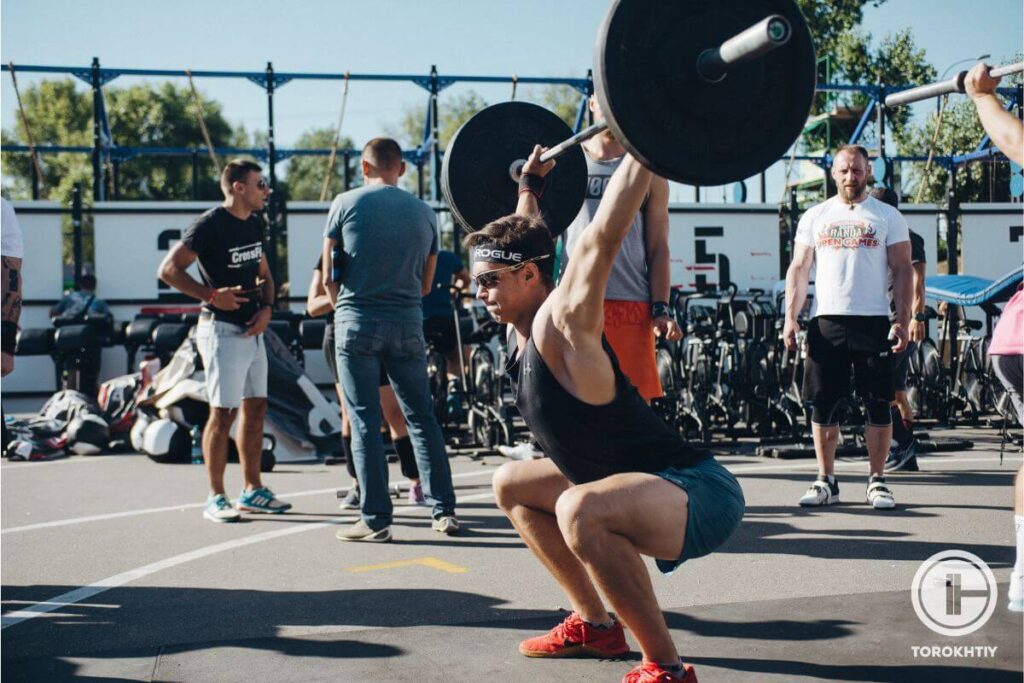
1. Front Squat
Before we get into the harder squat variations, we’d like to shout out the classic barbell front squat. Barbell back squats are the classic variation that most people pick up first when they start weightlifting.
Placing the barbell on your back shoulders immediately feels natural for weight-bearing, and most people lift the highest weight amounts with the back squat.
However, muscle recruitment between the two squats is nearly identical, while the front squat may be more joint-friendly, particularly on the knees. Ejecting in an emergency is also easier, as in the worst-case scenario you only need to dump the weight in front of you, whereas in the back squat, there’s a real risk of the weight collapsing on you.
So, what makes the front squat harder? First, the upright torso position places a greater demand on the core and lower back muscles to retain stability and balance.
Second, the frontal bar placement shifts the center of gravity forward, which requires greater activation of the quadriceps and core muscles. Third, it’s more difficult to balance the bar on your front shoulders than it is on your upper back.
There’s less surface area to place the bar on, and the front squat grip requires greater mobility and flexibility, particularly in your ankles and wrists, compared to the underneath grip of back squats.
2. Goblet Squats (+ Zercher Squat)
The Goblet squat is a squat variation where we hold the weight, usually a dumbbell or kettlebell, from underneath and tucked closely to our chest.
At first glance, the goblet squat may appear similar to the front squat, just using a different type of weight. However, the exercise dynamic is different.
During goblet squats, the weight is held exclusively in our arms, not the shoulders, forcing us to use less weight. It’s often considered easier than a front barbell squat (bar technical adjustments like dip level and weight used).
So, if that’s the case, why are goblet squats harder than some other variations? Since the entire weight is suspended in your arms, if you use a challenging weight amount, you’ll be squeezing on the dumbbell/kettlebell the entire time to maintain your grip.
This results in more arm muscle activation than a regular barbell squat, challenging your forearms and grip strength especially. Additionally, the frontal position of the weight and the typically lower finishing position will require greater balance.
If you’re having trouble with maintaining the grip, you can also try a Zercher Squat. During a Zercher, the barbell is held in the crooks of the elbows, near the lifter’s chest. That way, you may be able to lift more weight than a Goblet squat, while still taking pressure from your spine.
The positioning challenges the lifter’s core, upper back, and arms in addition to the lower body muscles targeted during regular squats. Zercher squats can be performed using a barbell or with a specialized tool called a Zercher harness.
3. Hack Squat
The hack squat variation is challenging due to the narrower stance and added element of suspension. Using a hack squat machine or a Smith machine allows the athlete to step forward, effectively “hanging” from the weight rather than balancing it directly on their torso.
Consequently, this creates an isolation effect on the lower-body muscles worked, presenting a greater challenge for the quadriceps, hamstrings, and glutes, especially. For this reason, this squat variation is often compared to the leg press exercise due to its isolated nature.
So, is a hack squat harder than a barbell squat? Both exercises put similar loads on the hips and joints. However, the hack squat experiences a reduced total trunk load, eliminating a common sticking point in regular squats and enabling the use of more weight.
If it’s fair to conclude that it’s easier, what makes the hack squat difficult? Simply, the actual hack squat requires access to a hack squat machine or Smith machine to achieve the suspension effect.
4. Overhead Squat
The next squat variation we’d like to take a look at is the overhead squat. In this exercise version, we simply hold the weight directly above our heads using a wide grip stance instead of balancing it on our bodies.
This exercise requires significant upper body strength, shoulder mobility, and core stability to maintain the weight overhead, getting increasingly more difficult the deeper you attempt to squat.
Tips From the Champ
When balancing the weight overhead, you remove the weight from your line of sight. If you’re not training in front of a mirror, it can be difficult to maintain proper form and alignment. It’s preferable to always use a mirror for complex exercises to judge form in real time.
Olympic Weightlifting Champion
The overhead squat targets multiple muscle groups simultaneously, including the legs, core, shoulders, back, and arms, making it as close to a full-body exercise as squats can be.
So, what’s the difficulty like on this one? First of all, since the weight is entirely supported by your arms, arm and back strength will be a determining factor in the amount of weight you can use. In addition, wrist and shoulder mobility determines how comfortable it will be to grip.
Furthermore, balancing the weight with your arms is more difficult than simply resting it on your shoulders.
5. ATG Squat
The full squat AKA ass-to-grass squat (or ATG for short) is fairly self-explanatory. As the funny name suggests, the goal is to squat deep, well below hip and knee level.
The exercise ends when your rear is parallel to the ground (touching the grass, per se), and you’re effectively sitting on your lower legs. This is the most straightforward harder squat variatio, as you simply go deeper beyond a normal squat. Some even say it is the one and only real squat 🙂
The exercise difficulty primarily comes from the increased range of motion, finishing deeper than other squat variations.
This requires additional ankle & hip mobility and core strength. It also ups lower-body muscle recruitment, particularly in the quads, hamstrings, adductors, calves, and glutes, to the max to rise back up. It’s difficult and requires a careful approach.
However, it can lead to significant strength and performance increases, improving sprint time, jump height, and anaerobic thresholds when compared to a regular or half-squat, making it practically applicable for strength and athleticism.
6. Split Squat
Split squats are performed by assuming a split stance, with one foot positioned forward and the other foot positioned back, with normal standing width between them. Apart from using more weight, the difficulty can easily be adjusted by simply taking a wider stance.
Other than emphasizing the leg muscles, the split squat is challenging for your balance and coordination.
As mentioned in the intro, one of the downsides of the traditional squat exercise is that people are naturally stronger on one side of their body (dominant hand, leg, etc.), which can affect their ability to perform a squat.
What makes the split squat great is the ability to train unilaterally, focusing on developing one side at a time. This makes it a great exercise for correcting bilateral differences that might be present as a result of, for example, lifestyle tendencies or injuries.
7. Bulgarian Split Squat
If you’re familiar with popular squat variations, you likely saw this one coming. The Bulgarian split squat is notorious for its difficulty, and yet still highly praised as one of the best lower-body exercises you can do. It’s arguably the hardest squat variation in terms of raw strength building.
When performing Bulgarian split squats, you first need to assume a split stance and raise one leg behind you onto a platform, resting it on your shoelaces or toes. That way, the suspended leg remains rested and partially inactive, and the entire exercise is driven through one leg.
Compared to a standard barbell back squat, the Bulgarian split squat is less demanding on the knee joint. If that’s the case, why is the Bulgarian split squat feared so much? The movement pattern is the same as the previously mentioned split squat, except one leg will be suspended in higher, behind our back.
This not only leaves us with a unilateral (single-leg) load-bearing but the entire balance and stability of the movement is dictated by that one leg as well.
As a result, all exercise forces are felt on that leg, leading to noticeably higher muscle recruitment. Apart from the quads, glutes, hamstrings, and calves, the Bulgarian split squat emphasizes the core muscles.
8. Pistol Squats
Pistol squats, also known as single-leg squats, are less implemented in weightlifting and raw strength training. However, they’re excellent at challenging the athlete’s mobility, balance, and coordination while also activating lower-body muscles. During pistol squats, the athlete raises one leg to the front and performs a deep squat position.
Tips From the Champ
Beginner pistol squats are typically performed without weight, relying solely on the body weight for resistance. However, more advanced variations add resistance by holding a dumbbell or kettlebell, usually at shoulder height or above the head.
Olympic Weightlifting Champion
The lifted leg remains in the air throughout the entire movement, placing all exercise forces on the other leg. This movement pattern places significant demand on the core, hips, thighs, and ankles.
One of the key benefits of doing pistol squats is their emphasis on unilaterally training strength, balance, and mobility helping you address muscular imbalances between your left and right sides. In cases of severe disbalance in lower body joint stability and flexibility, particularly due to lifestyle or injury-related factors, pistol squats are highly recommended.
9. Dragon Squat
Last but not least we’d like to mention Dragon squats, also known as Dragon Pistol squats. Dragon squats are the ultimate test of mobility, balance, flexibility, coordination, and core strength, requiring precise body control and muscle recruitment to perform. They can take months of learning to perfect. If you’ve conquered the pistol squat, this could be a fun new challenge.
To do a Dragon squat, start by raising one leg at the knee and begin squatting with the opposite leg. As you go down, the raised leg wraps behind your bent leg, staying in the air the entire time. As you lower yourself into a deep squat, the wrapping leg flexes forward, parallel to the ground, imitating a dragon’s tail.
Expect a high demand placed on the hips, thighs, ankles, and core.
FAQ
How Do I Make Squats Harder?
The classic way to make a squat exercise harder is simply adding more weight. Other than that, experimenting with stance width and position as well as squat depth can provide a new challenge without having to add raw weight.
Adding a pause mid-exercise, such as with box squats, can remove the momentum and stretch reflex from the exercise and require greater strength to rise back up. If you’re growing bored of regular squats, it’s a good idea to explore harder squat variations that may change the dynamics and muscle recruitment of the exercise.
Is ATG Harder Than Parallel Squats?
Yes, ATG (ass-to-grass) squats are harder than parallel squats. ATG squats dip further down than parallel squats, thus requiring a greater deal of strength, mobility and flexibility. Furthermore, the higher range of motion means the muscles work for a few good seconds longer (more time under tension) than parallel squats.
Is Dragon Squat the Hardest?
Dragon squats AKA dragon pistol squats are often considered the hardest squat variation due to a high demand on mobility, flexibility, and balance, and the complexity of the movement requires practice.
Conclusion
they’re more fitting to your workout goals than a standard barbell back squat. If you’re looking for raw strength gains then the standard front squat, ATG, or Bulgarian split squat are great choices.
If you’re training for general athleticism, pistol & goblet squats can pose a challenge, while the Dragon squat can be an ultimate goal. People vary differently from proportions to athletic level, meaning that the hardest squat variation for you may not necessarily be the same for someone else.
We’d love to hear from you as well. Let us know which of these squat variations you’ve tried. Also, which newly discovered variations are you looking forward to trying soon? Leave a comment with your thoughts and remember to follow us on our social media pages if you;re looking for content.
Referenses:
- Alex Silva Ribeiro, Erick D. dos Santos, João Pedro Nunes, Matheus Amarante do Nascimento, Ágatha Graça, Ewertton Bezerra, Jerry Mayhew, ”A Brief Review on the Effects of the Squat Exercise on Lower-Limb Muscle Hypertrophy,” Strength & Conditioning Journal (Publish Ahead of Print)
- David R. Clark, Michael I. Lambert, Angus M. Hunter, “Trunk Muscle Activation in the Back and Hack Squat at the Same Relative Loads,” The Journal of Strength and Conditioning Research vol. 33, no. 1 (2019), S60-S69
- Ethan R. Mackey, Bryan L. Riemann, “Biomechanical Differences Between the Bulgarian Split-Squat and Back Squat,“ International Journal of Exercise Science vol. 14, no. 1 (2021), 533-543
- Jesús G. Pallarés, Alejandro M. Cava, Javier Courel-Ibáñez, Juan José González-Badillo, Ricardo Morán-Navarro, “Full squat produces greater neuromuscular and functional adaptations and lower pain than partial squats after prolonged resistance training,” European Journal of Sport Science vol. 20, no. 1 (2020), 115-124
- Jonathan C. Gullett, Mark D. Tillman, Gregory Gutierrez, John W. Chow, “A Biomechanical Comparison of Back and Front Squats in Healthy Trained Individuals,” The Journal of Strength and Conditioning Research vol. 23, no. 1 (2008), 284-92
- Madeshwaran Elumalai, K. Jothi Prasanna, “Influence of pistol squat on decline angle and hamstring muscle activity in an healthy population,” Journal of Kinesiology and Exercise Sciences vol. 31, no. 93 (2021),11-20
- Sean P. Flanagan, George J. Salem, “Bilateral differences in the net joint torques during the squat exercise,” The Journal of Strength and Conditioning Research vol. 21, no. 4 (2007), 1220-1226
- All photos are made by our Torokhtiy Media Team
Why Trust Us?
With over 20 years in Olympic Weightlifting, our team does its best to provide the audience with ultimate support and meet the needs and requirements of advanced athletes and professional lifters, as well as people who strive to open new opportunities and develop their physical capabilities with us.
By trusting the recommendations of our certified experts in coaching, nutrition, dietology, and sports training programming, as well as scientific consultants, and physiotherapists, we provide you with thorough, well-considered, and scientifically proven content. All the information given in the articles concerning workout programming, separate exercises, and athletic performance, in general, is based on verified data. We ensure that you can rely on our professionals’ pieces of advice and recommendations that can be treated as personalized ones which will benefit you and fully meet your needs.
The product testing process is described in more detail here
Author: Jacek Szymanowski
Certified Nutritionist,
M.Sc.Eng. Biotechnology
Performance Architect,
Strength and Conditioning Specialist
With over 30 years of fighting experience, specialization in nutrition coaching for athletes, and expertise in metabolic health and dietary strategies, Jacek offers a comprehensive approach to optimizing your performance and well-being. Backed by a Master of Science degree in Biotechnology, Jacek remains at the forefront of scientific advancements, ensuring that his coaching is always evidence-based and up-to-date.

